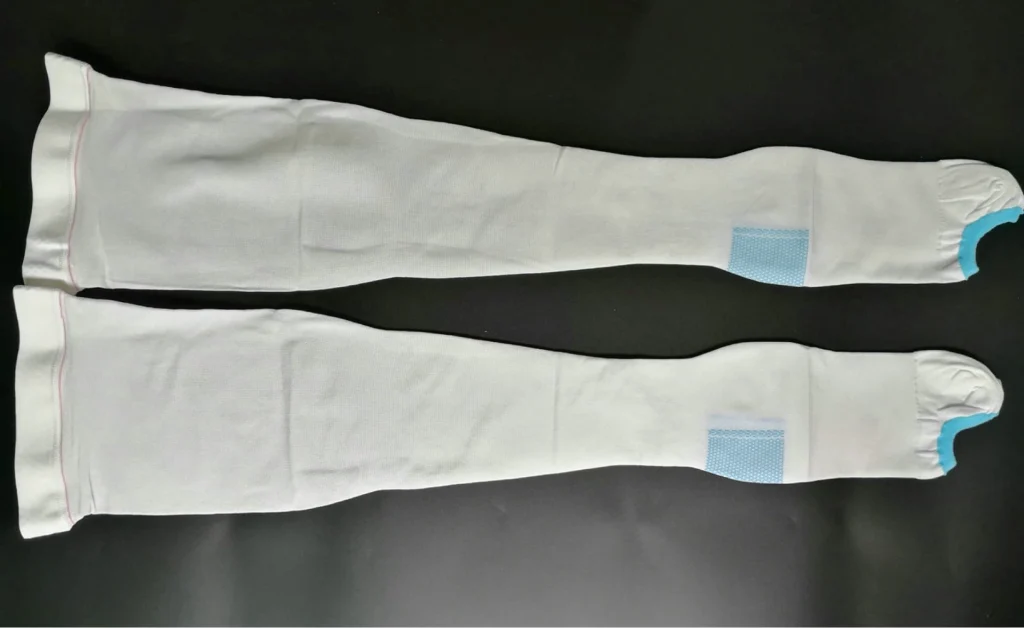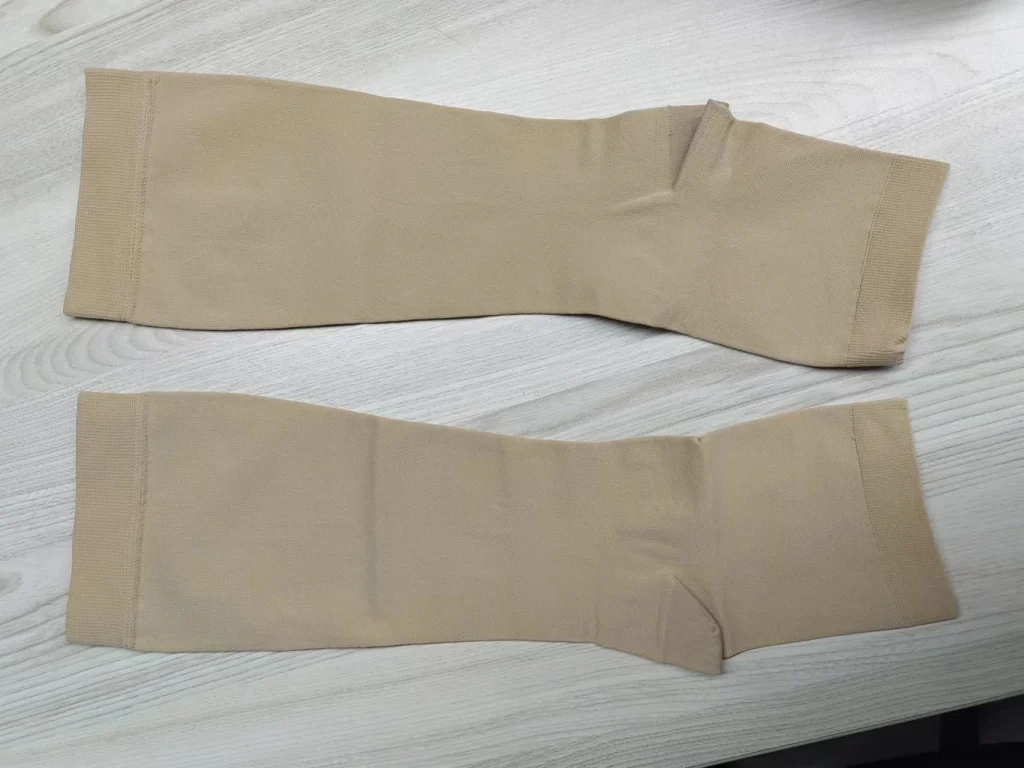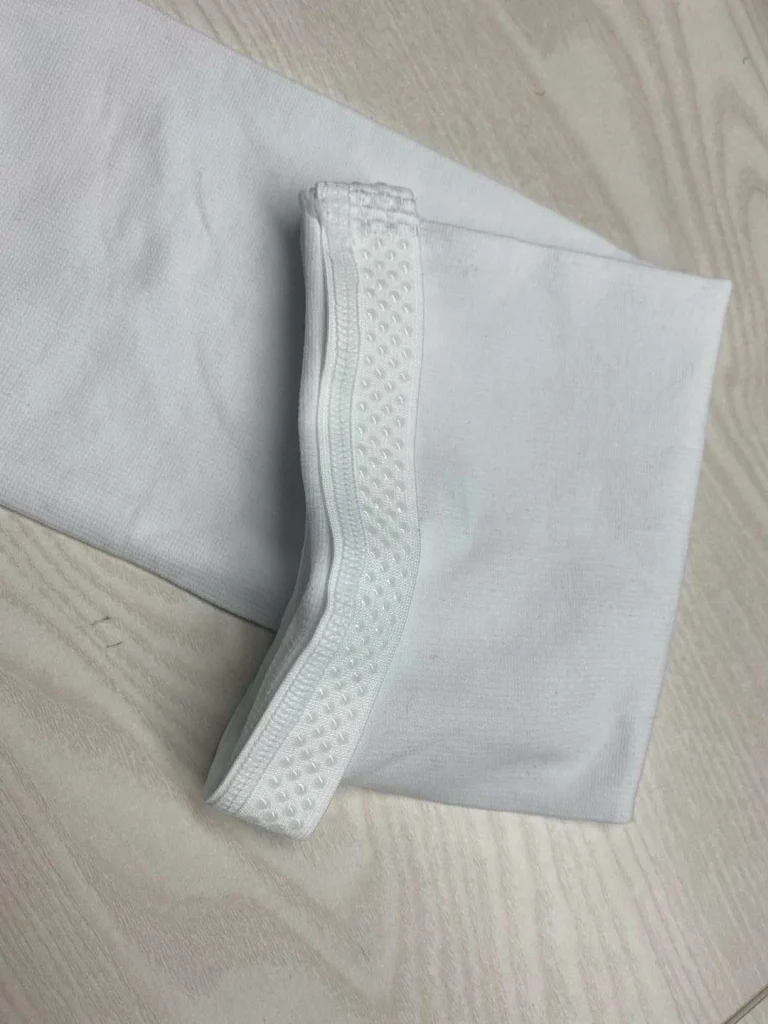Compression socks and medical stockings may look similar, but their design, function, and manufacturing process are very different. For brands and retailers, understanding these differences is important when selecting products for customers.
This guide breaks down the differences in knitting methods, machinery, compression levels, features, certifications, and more. Whether you are stocking socks for athletes, frequent travelers, or patients recovering from surgery, knowing the correct product type helps avoid customer confusion and improves satisfaction.
What Are Compression Socks and Medical Stockings?
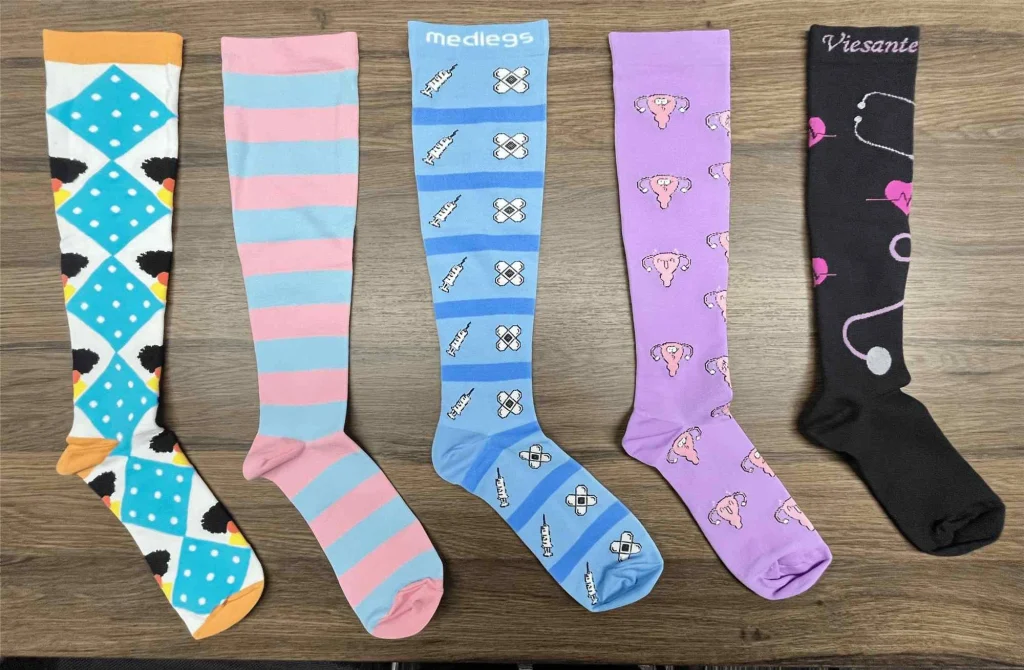
Compression socks are elastic garments that apply mild to moderate pressure on the lower legs. They are commonly worn by athletes, travelers, office workers, and individuals who spend long hours standing. They support circulation, help prevent fatigue, and reduce the risk of swelling.
Medical stockings are intended for therapeutic purposes. They are often prescribed for serious conditions such as chronic venous insufficiency, deep vein thrombosis (DVT), or after surgical procedures. These products apply graduated, controlled compression and are subject to medical standards.
Machinery and Knitting Methods
Regular Compression Socks
- Knitting Method: Circular knitting
- Machine Type: Standard circular knitting machines
- Needle Count: Typically 144, 168, 200, or 220 needles
Previously, we mentioned that the standard needle counts for socks are 144, 168, 200, and 220 needles. These machines are fast, efficient, and used for high-volume production. Circular knitting allows for a seamless, elastic structure ideal for general-purpose compression.
Medical Stockings
- Knitting Method: Flatbed or precision circular knitting
- Machine Type: Specialized medical machines (e.g., Lonati, Merz)
- Needle Count: Ranges from 300 to 420 needles
These machines offer precise control over compression gradients. They include advanced features like automated tension adjustments and digital quality checks to meet medical standards.
Machinery Cost Impact
Medical machinery costs up to 10–20 times more than standard circular machines. The added cost is reflected in product pricing. Additionally, medical-grade production often requires strict quality checks, reducing production speed and availability.
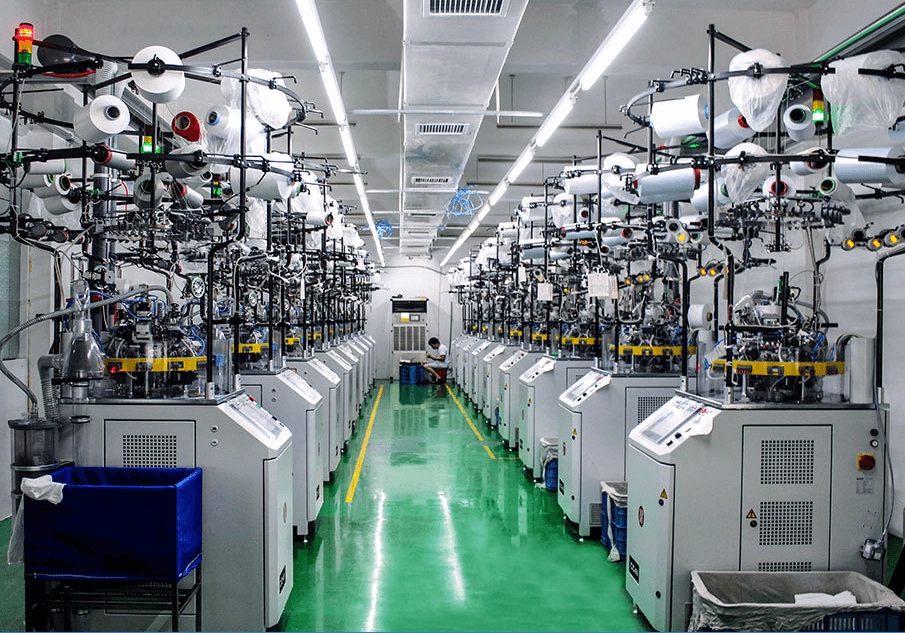
Compression Levels and Intended Use
Medical Compression Stockings
- Designed for clinical use
- Higher compression levels (often 20–30 mmHg or above)
- Used under medical supervision
- Treat conditions like varicose veins, post-surgery recovery, DVT
Regular Compression Socks
- Designed for wellness and prevention
- Lower compression levels (typically 8–20 mmHg)
- Used by athletes, workers, travelers
- Improve comfort, reduce swelling, aid muscle recovery
Product Styles, Designs, and Lengths
Both product types come in various lengths:
- Knee-High: Common for mild swelling or travel
- Thigh-High: Needed for severe vein issues
- Pantyhose: Full-body support for chronic conditions
Design Differences
- Regular Socks: Offered in stylish, colorful, or athletic designs
- Medical Stockings: Usually neutral (beige, white, black), focused on function
Design for medical use is subtle to remain discreet and functional. Regular compression socks offer more variety in appearance for lifestyle or sport use.
Certifications and Manufacturer Requirements
For Regular Compression Socks
- Follow standard textile safety guidelines
- May comply with OEKO-TEX or similar non-medical standards
For Medical Stockings
- Require ISO 13485 medical device certification
- May need FDA or CE approval
- Subject to strict quality control and labeling rules
Retailers importing medical stockings should verify certifications to avoid compliance issues. This includes machine quality, traceable batch codes, and packaging requirements.
Work With a Qualified Compression Socks Manufacturer
Choosing a capable manufacturer is key to meeting the needs of different customer segments. From casual compression socks to medical-grade stockings, the differences in production, machinery, and certification require experience and precision.
Our factory produces both regular compression socks and certified medical stockings using Lonati and Merz machines. We follow strict quality control processes and hold medical certifications such as ISO 13485.
Whether you’re developing a product line for retail or seeking a supplier for clinical products, contact us to find the right compression solution tailored to your needs.
FAQs About Compression Socks vs Medical Stockings
What is the main difference between compression socks and medical stockings?
Compression socks are for general wellness; medical stockings are used to treat health conditions under prescription.
Are medical compression stockings more effective?
They provide higher, medically measured pressure and are better for serious vein disorders.
Can I sell medical stockings without certification?
No. Medical stockings require ISO or FDA certification. Selling uncertified products may violate regulations.
How do I know which type to stock?
If you target athletes or lifestyle users, regular socks are suitable. For clinics or pharmacies, stock certified medical products.
What length should I offer in my catalog?
Offer knee-high styles for general use, and include thigh-high or full-length products for therapeutic users.

